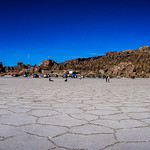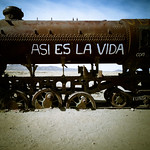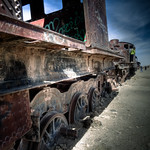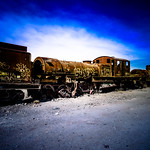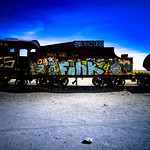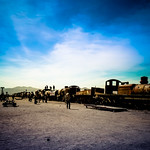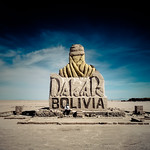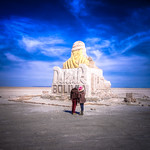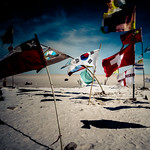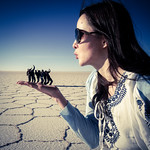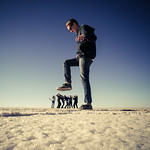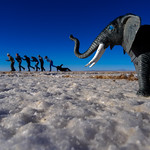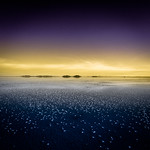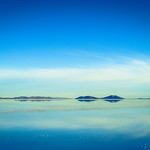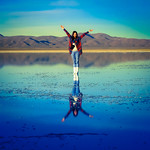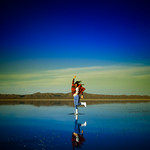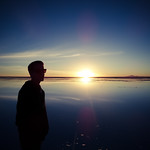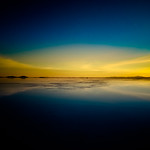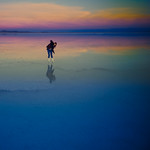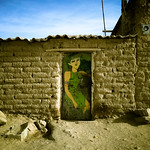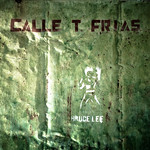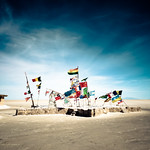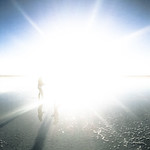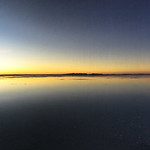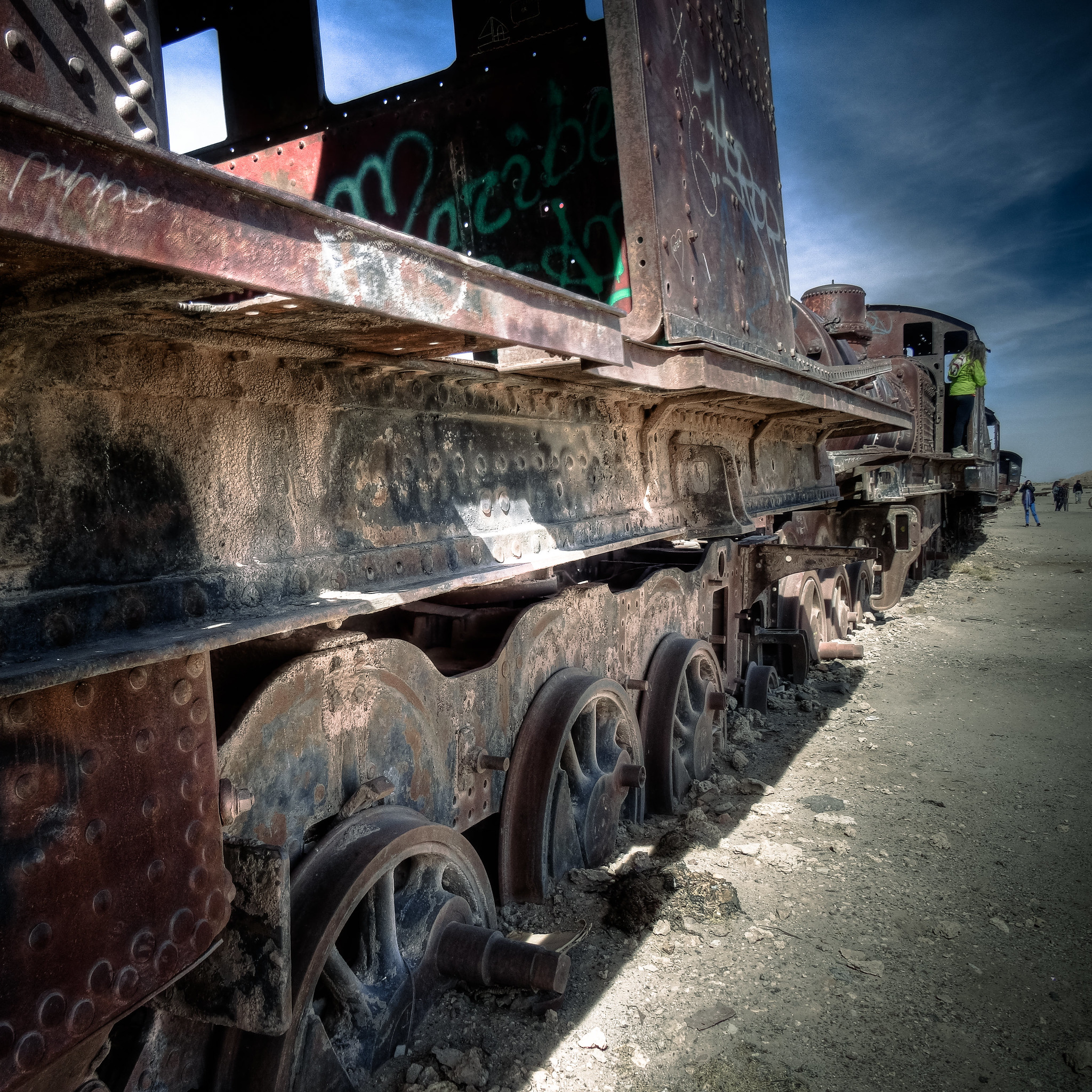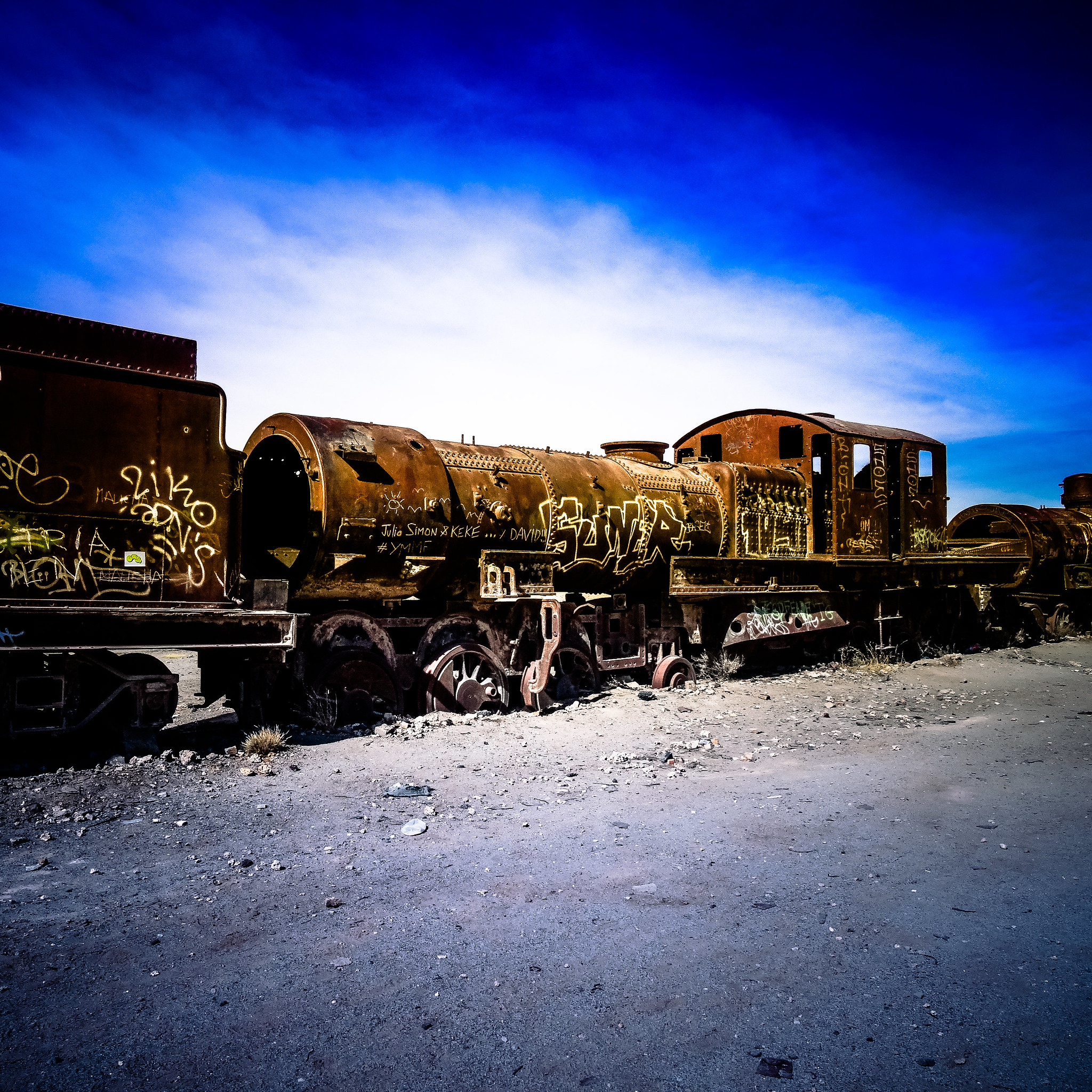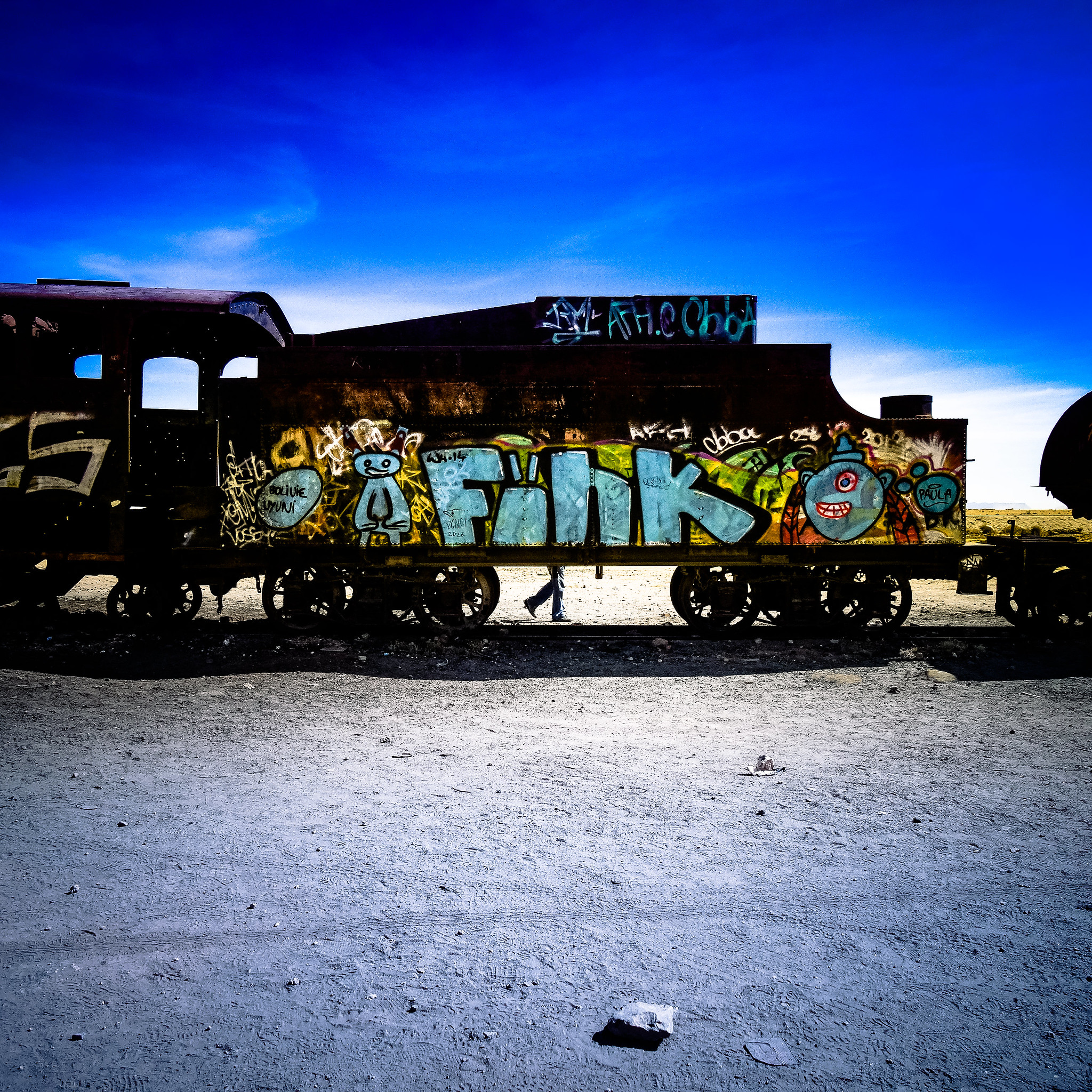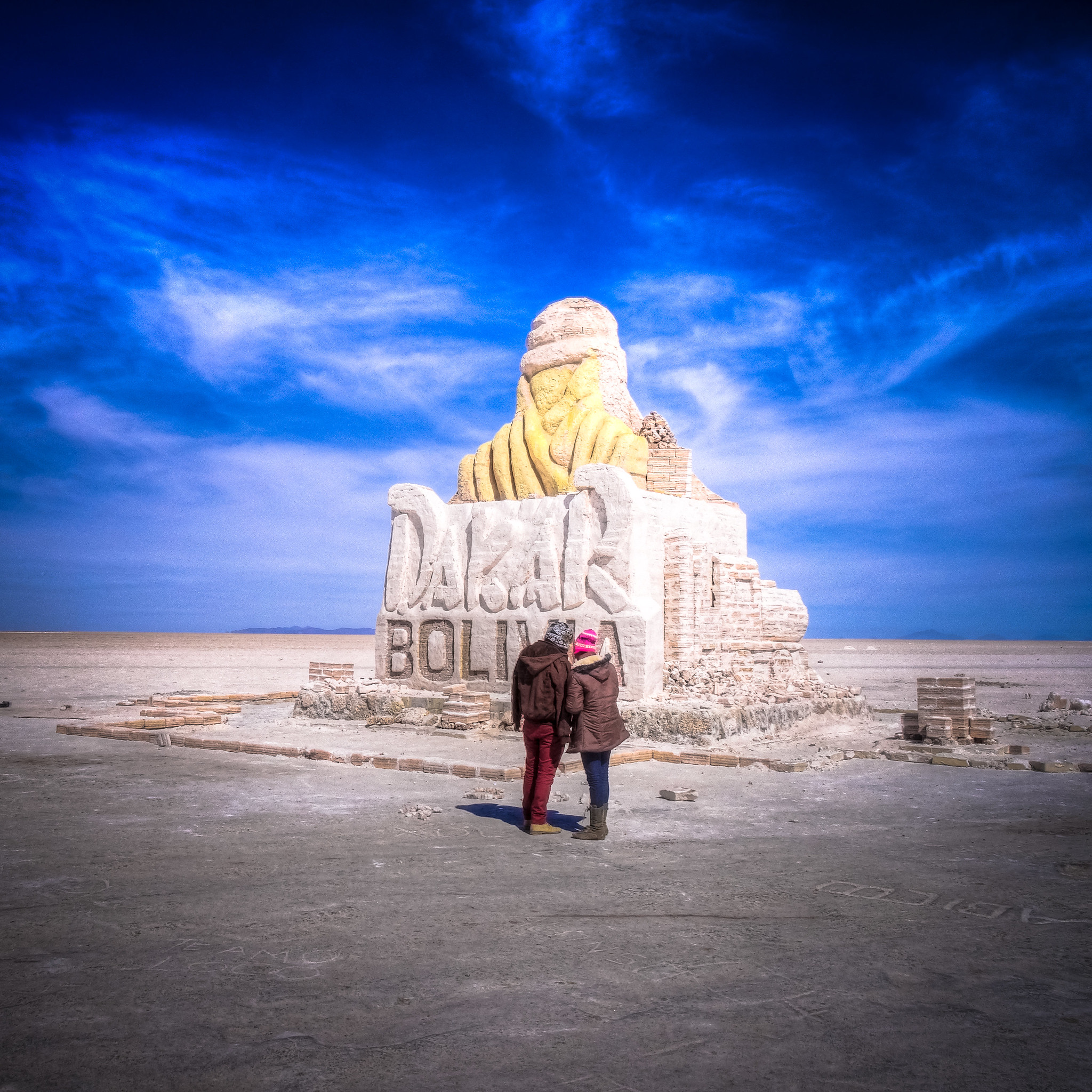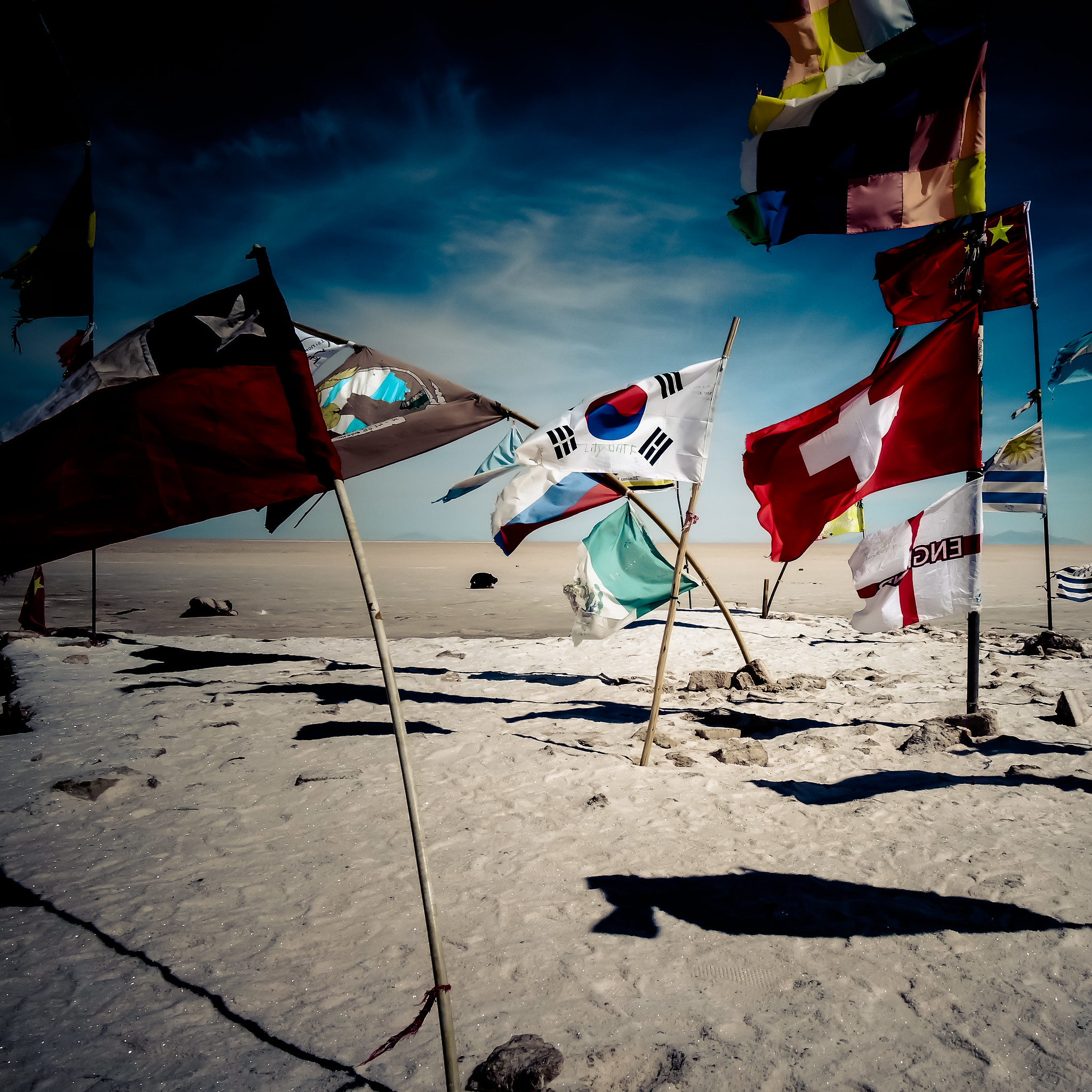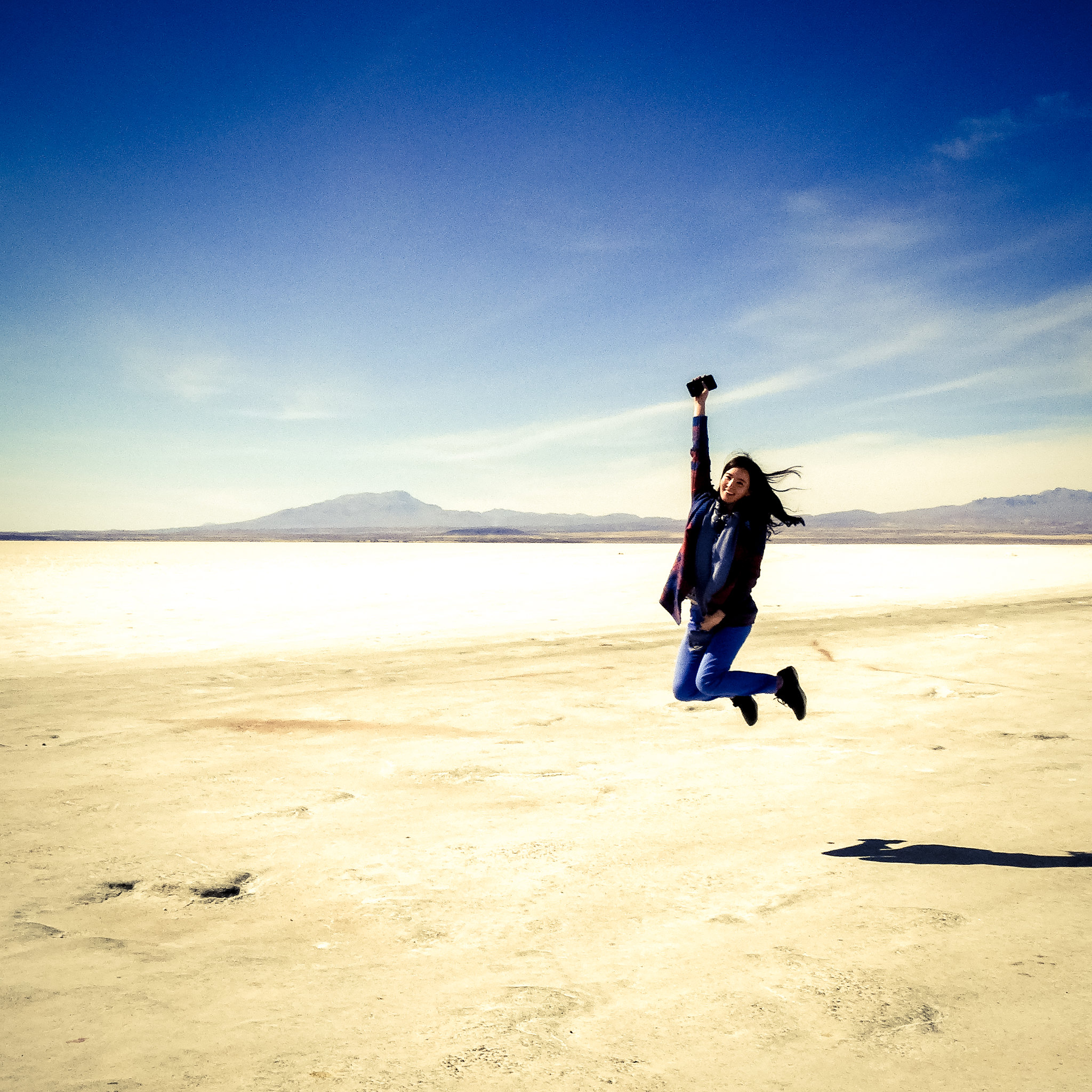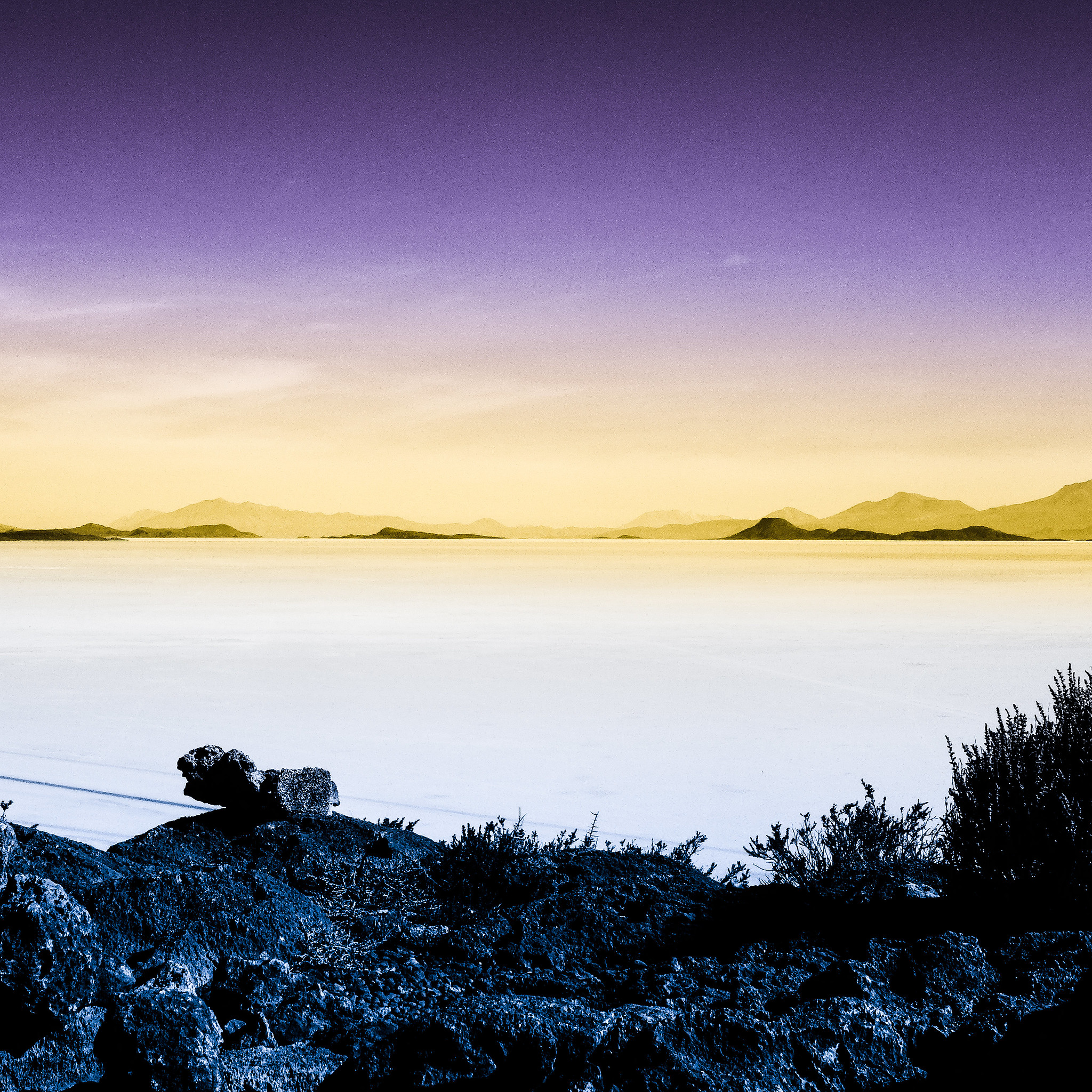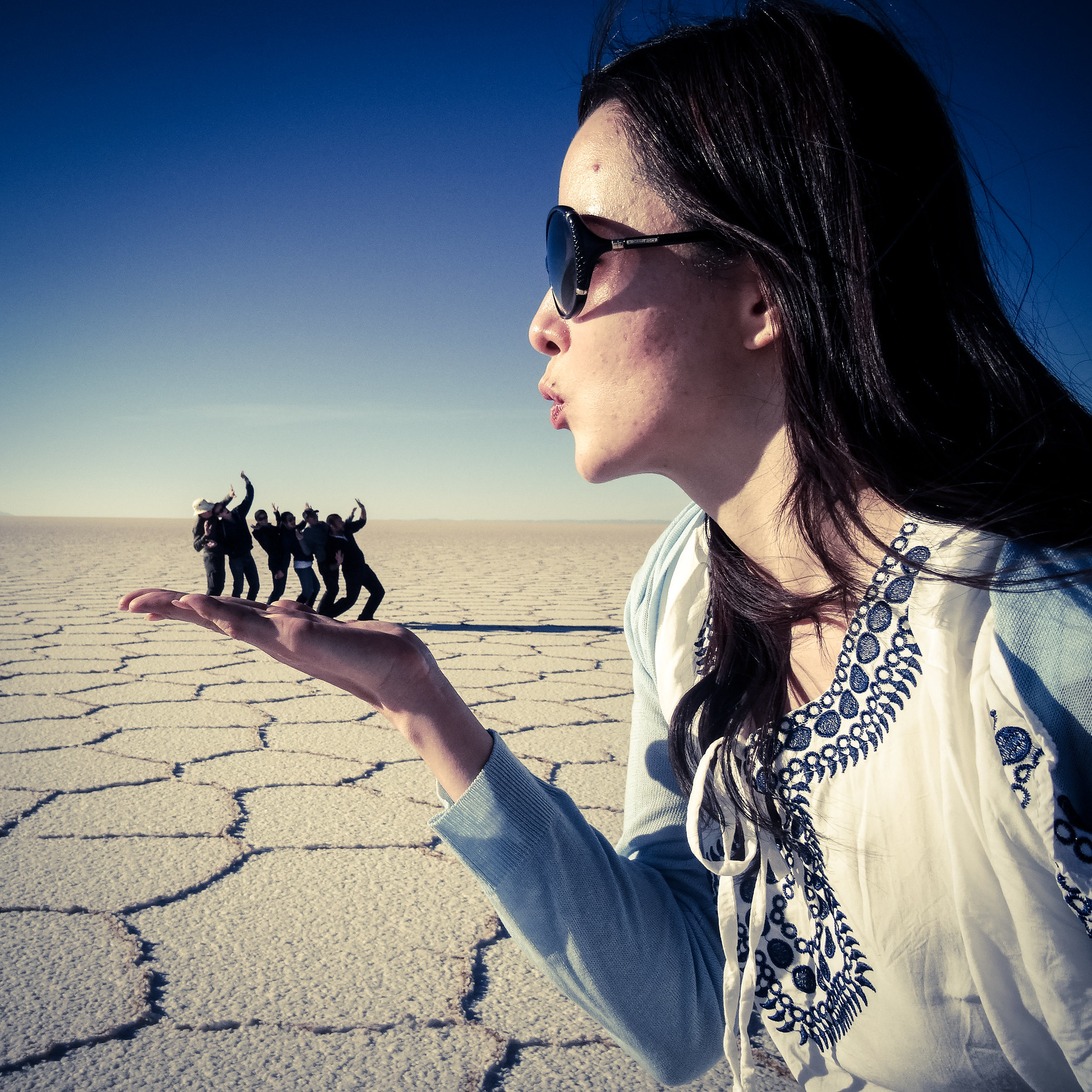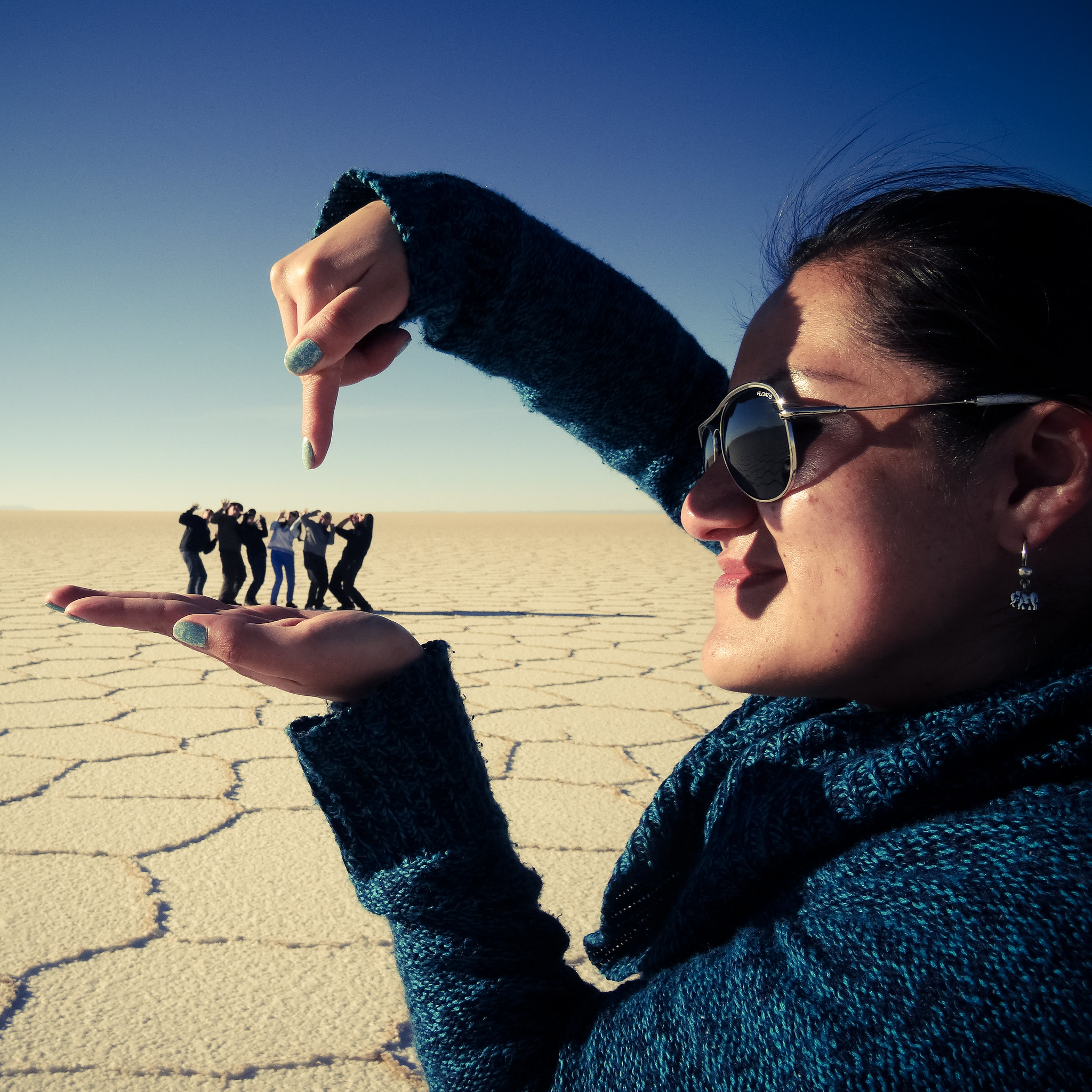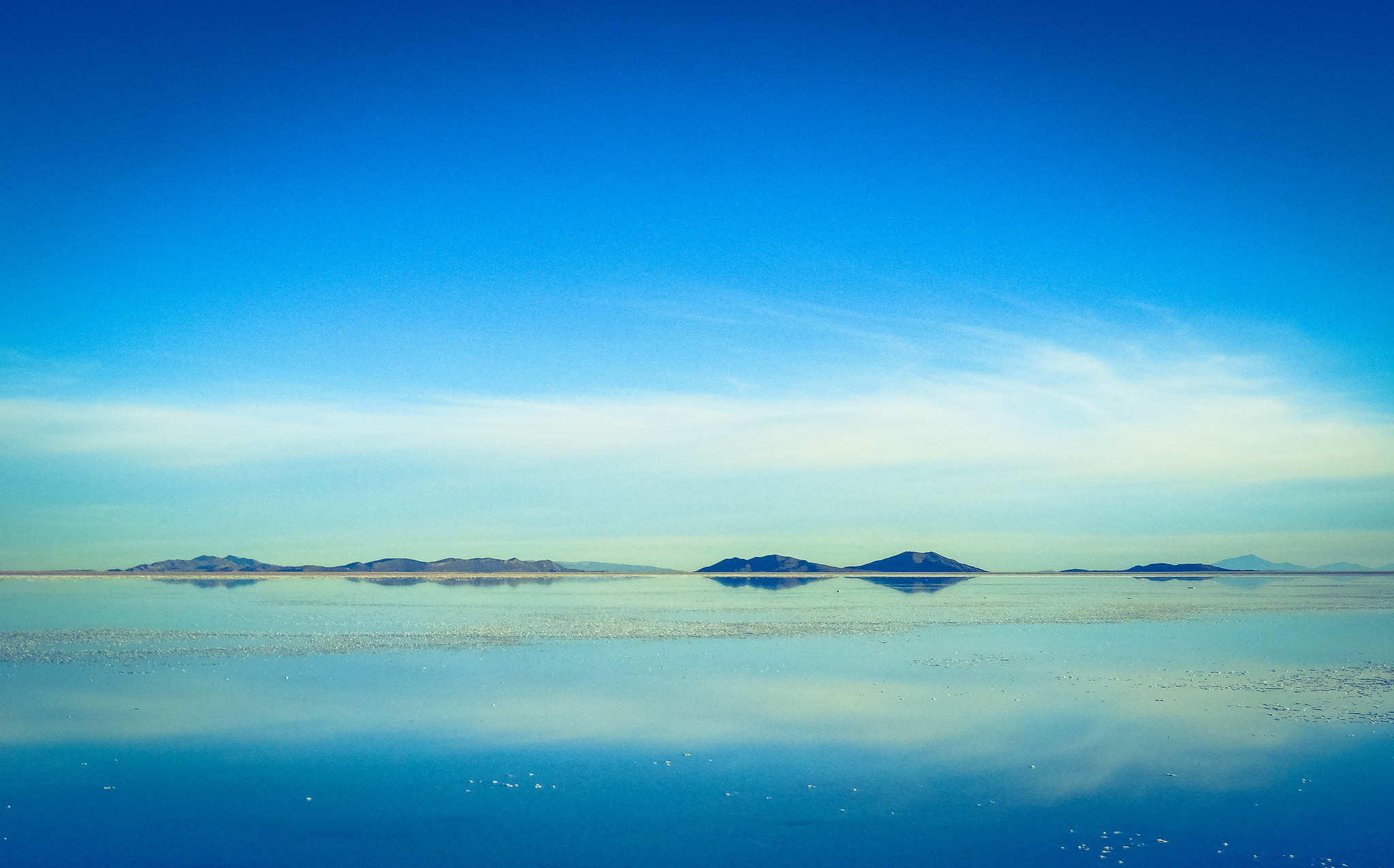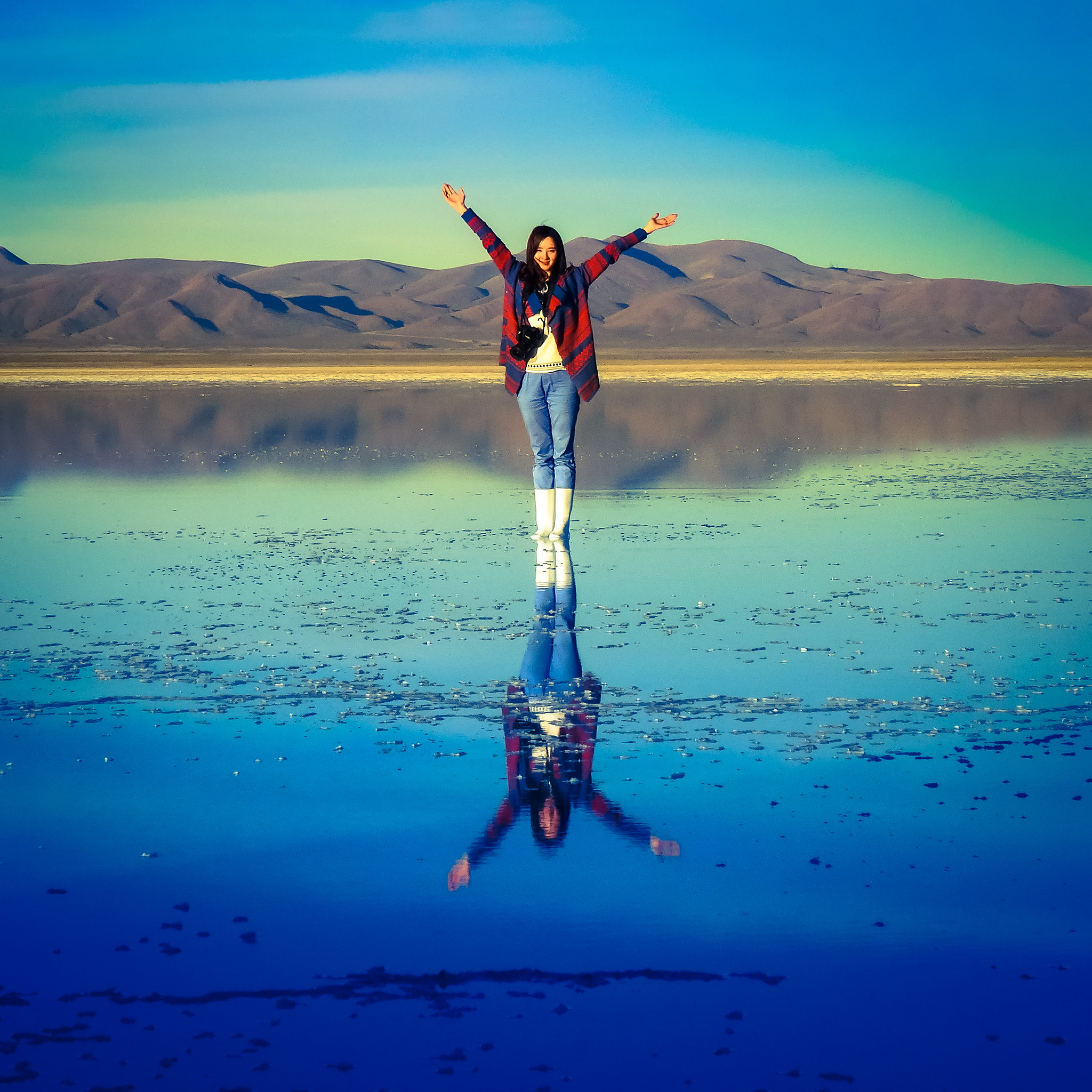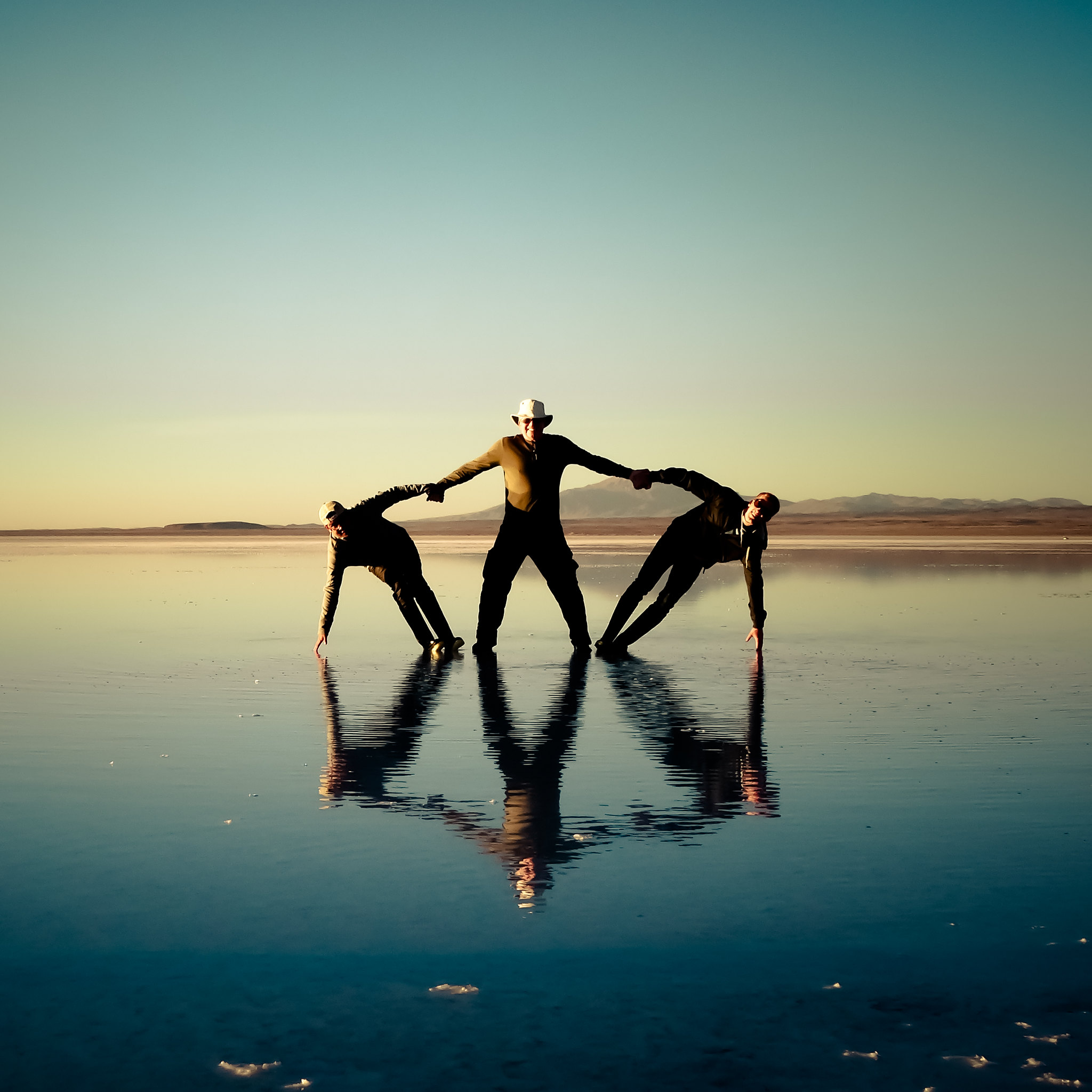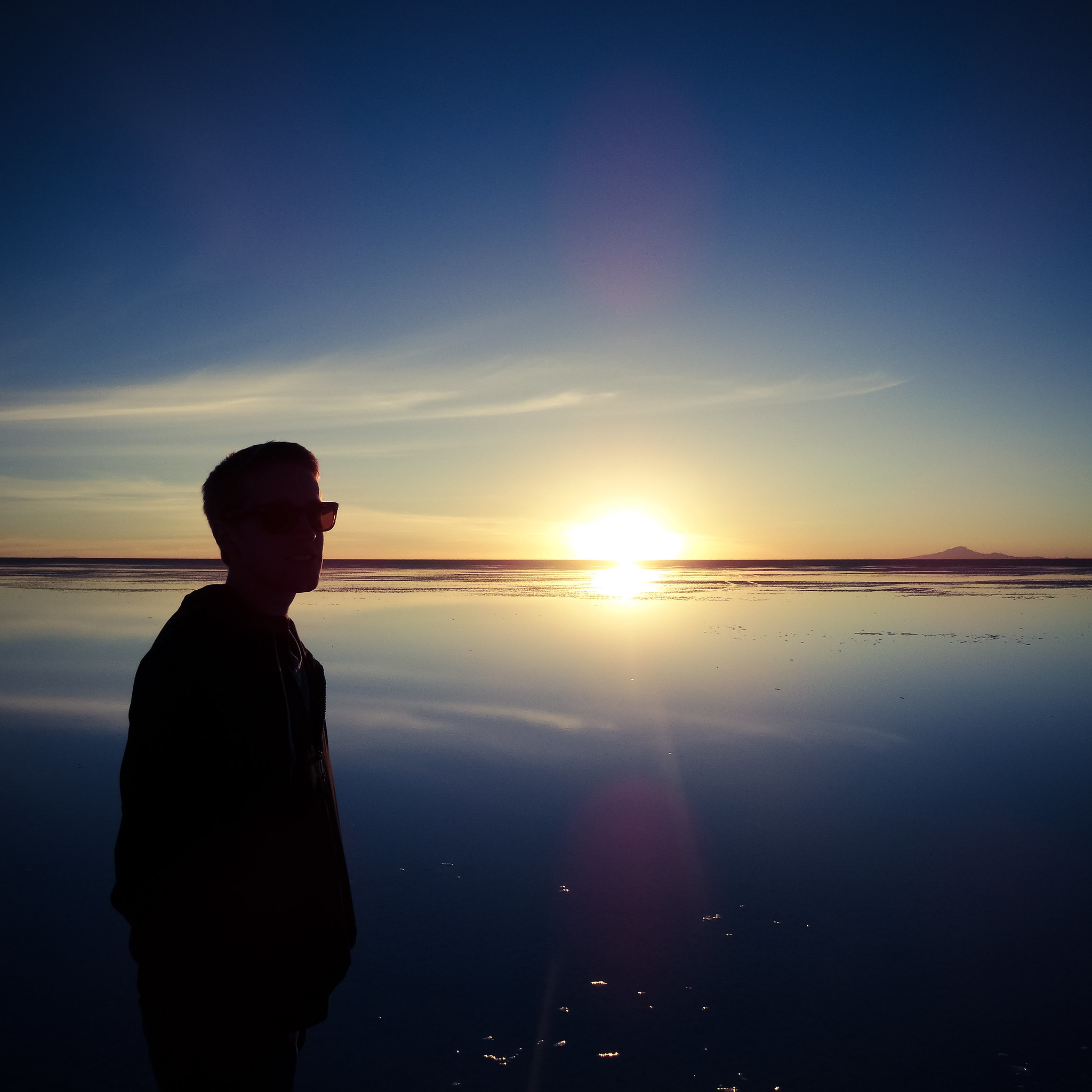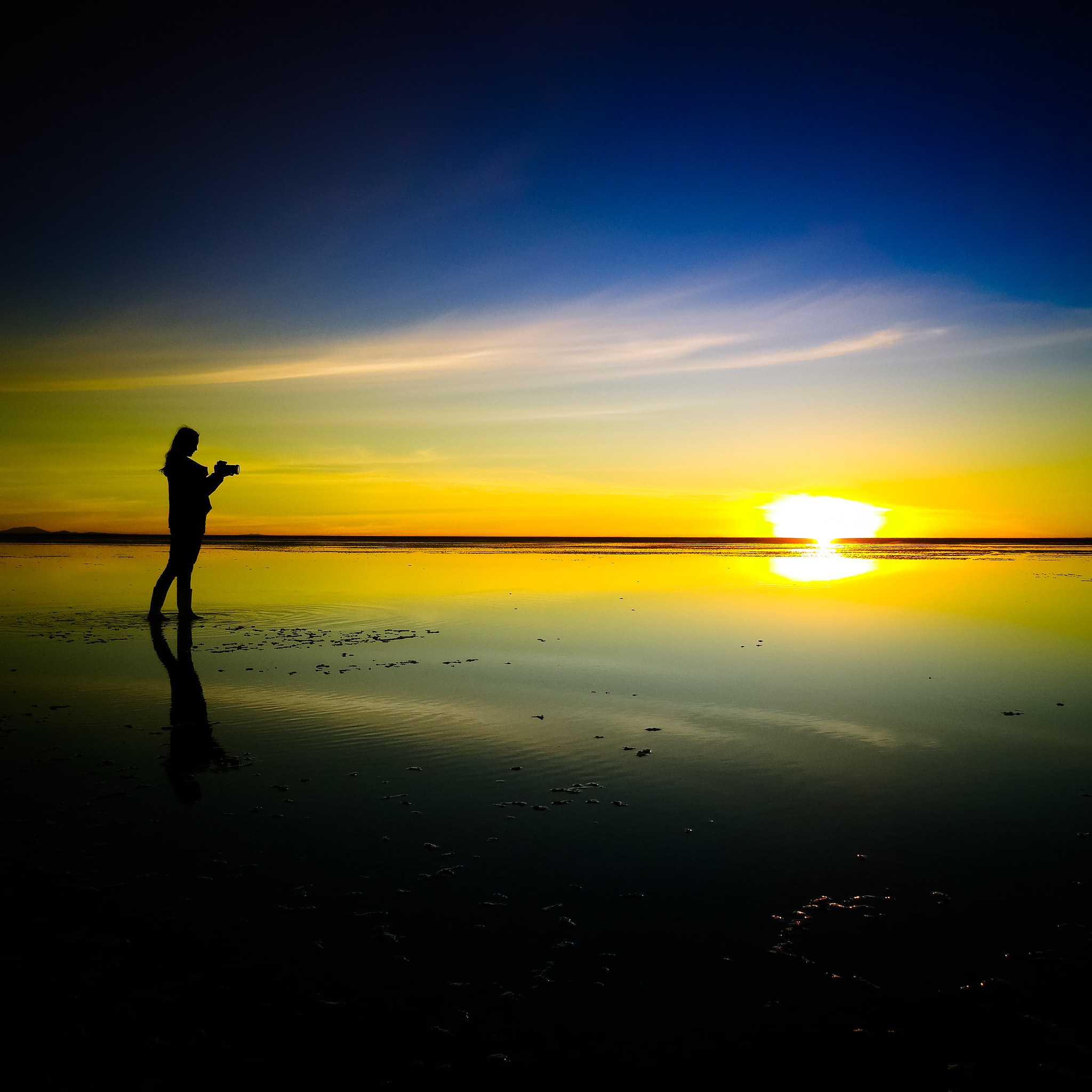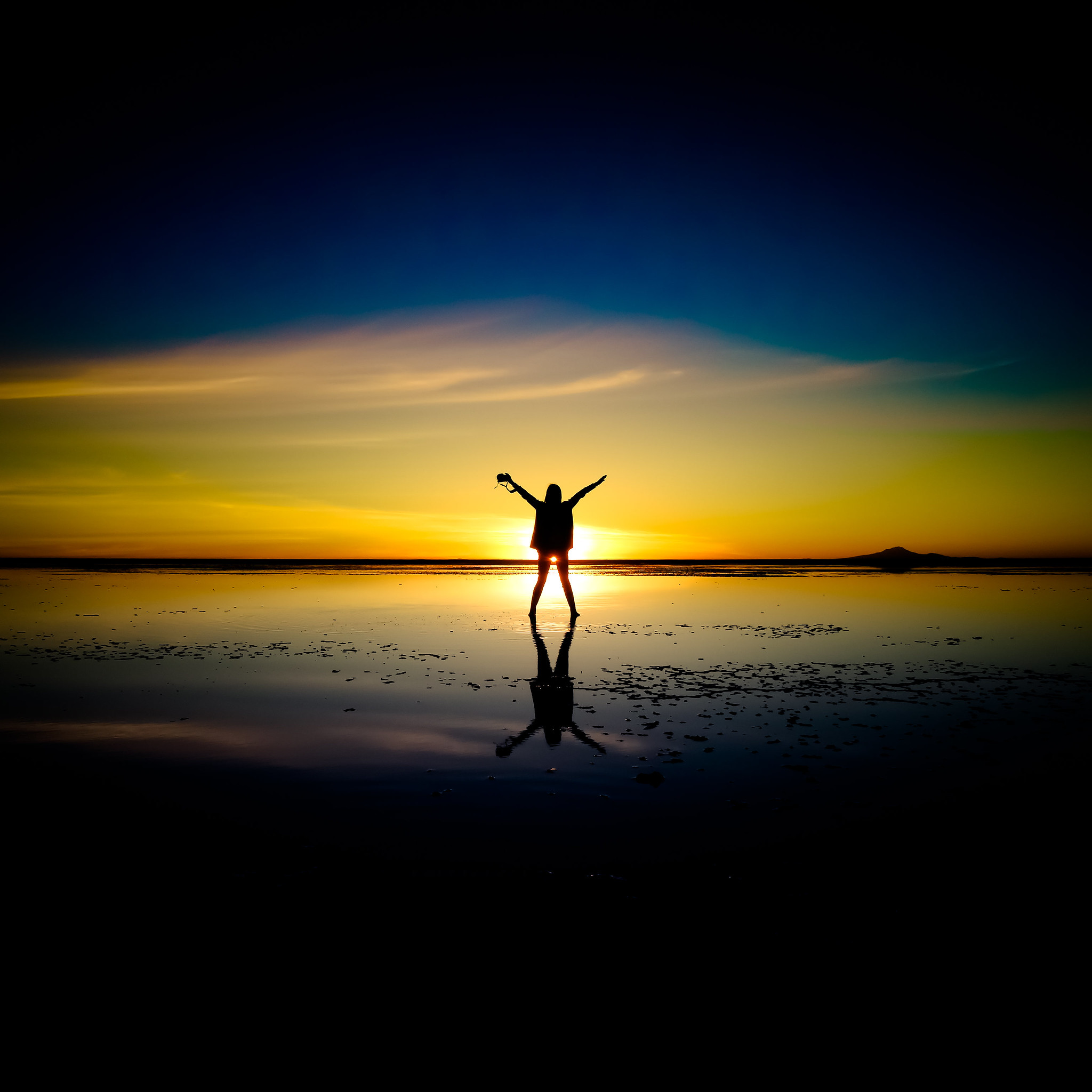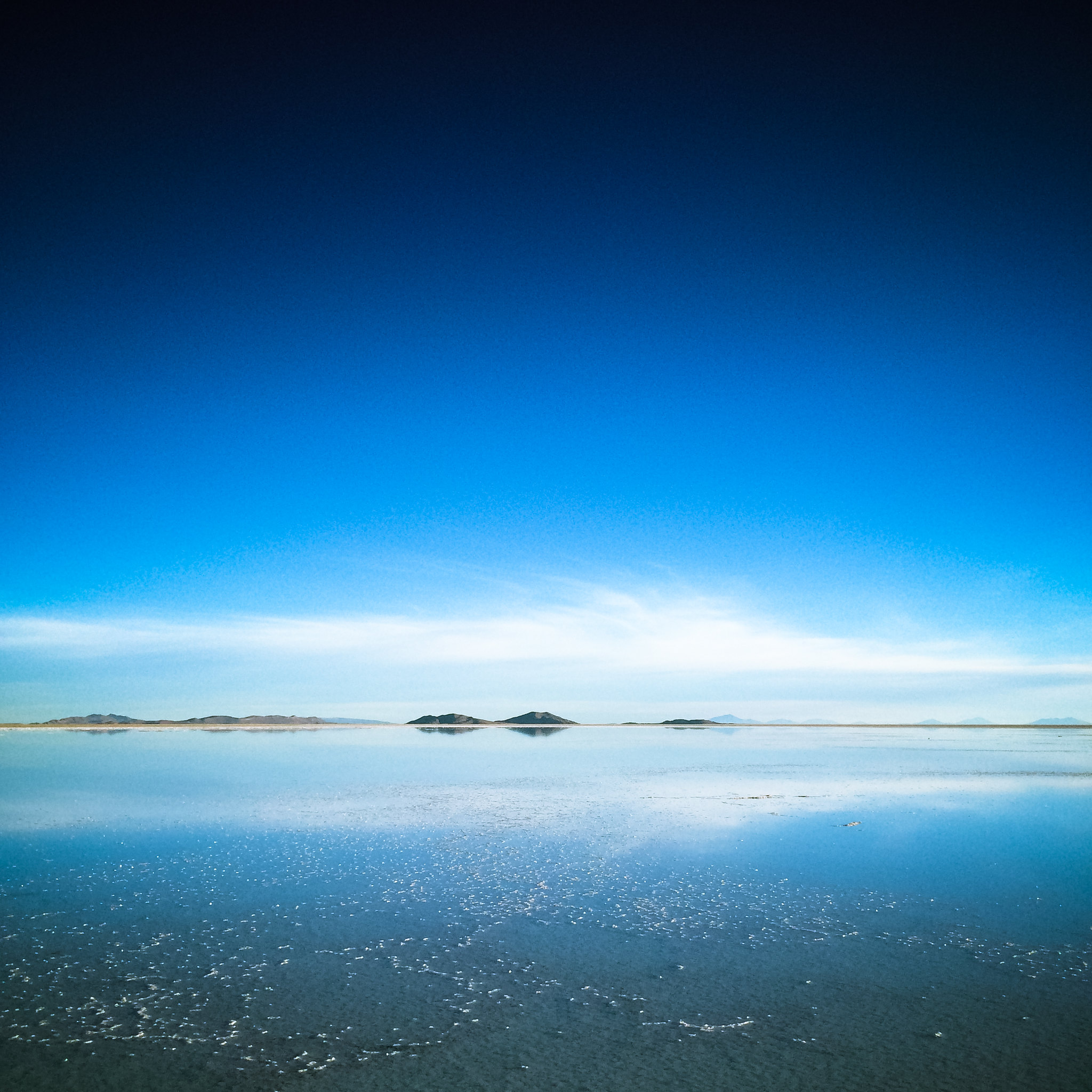Salty reflections
It's four hours to the border from Calama. And another four to Uyuni. But it also took three hours of border formalities. Mostly because, apparently, several regional passengers did not have the right papers, or overstayed their visas.
Half a dozen people who left Calama with me, were not allowed to leave the country.
Waiting in line at the border, I noticed that, amongst the 50 or so in the queue, I was the tallest in line. Now that doesn't happen very often.
Disturbingly, at the border crossing, speakers were blaring music by Modern Talking. Stranger, the whole region, I slowly discovered, appears to have a profound love for 80s Europop. The most striking hit, which I heard in several countries, on anything from local radio to mixtapes in crappy busses, was VOF de Kunst's Susanna.
Uyuni is more of a town than San Pedro, even though conditions this side of the border seem to be harsher. The main drag, along the train station, actually has several art installations, though here too, at least the downtown economy, seems completely geared to tourists, foreigners almost being the only ones roaming the streets. It does seem that the activities in the surrounding salt flats on this side of the border are significantly cheaper than in San Pedro. For one, the walk-in rate for cramped dorm beds in San Pedro is about 18 dollars. In Uyuni, you get a single room for just over 5.
With the recent move of the Dakar rally to South America, Uyuni has found itself on the circuit. The largest statue in downtown Uyuni commemorates Dakar, as does a statue in the middle of the nearby salt flats.
Bolivia stands out in South America for its strong ethnic overtones, with over 60% of the population being indigenous. Besides that, the scenery, the climate and people have more than a superficial resemblance to what you'd find in Central Asia, the food is also strikingly different from what's found in neighboring countries.
Llama is the obvious meat, but all street foods were new to me. One surprise: quinoa juice; slimy and served luke warm.
Not to be missed in Uyuni, is the part of the salt flats that's submerged under water. The vast expanses with the shallow water on the salty ground result in near perfect reflections, creating an otherworldly feel that's mesmerizing.
For some reason, the mirror-like surface specifically attracts East Asian tourists. I met several that had come to Latin America specifically for the Uyuni salt flats, and our guide on the one day tour revealed that some actually come to have their wedding here (not their honeymoon).
The bus network in Bolivia is several steps below that of much of the rest of the continent. No toilets on board, no reclining seats, no breaks and generally fairly decrepit vehicles. That said, there's no overselling and the drivers aren't nuts. And, busses leave fairly on time. The schedules are published and as soon as the planned departure time passes, passengers start to shout impatiently: "Vamos! Vamos!"
From Uyuni to Potosí, we left ten minutes late. The (Bolivian) man next to me started complaining: "What is this?! Bolivian time!?"

